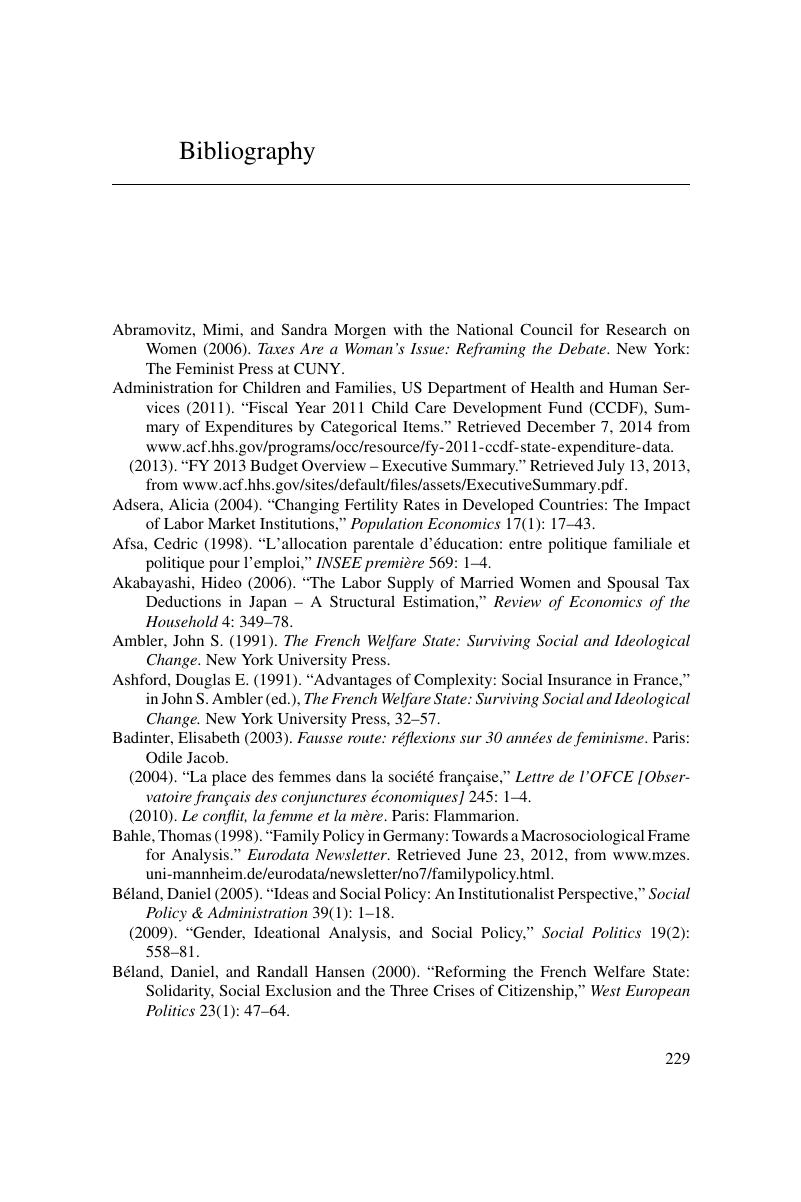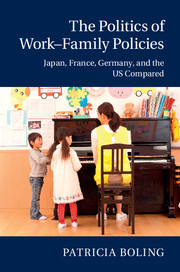Book contents
- The Politics of Work–Family Policies
- The Politics of Work–Family Policies
- Copyright page
- Contents
- Figures
- Tables
- Interviewees
- Preface
- Book part
- 1 Why work–family policies matter, and how best to study them
- 2 Demographic and policy trends in OECD countries
- 3 Familialist policies in France
- 4 Germany enacts change
- 5 Japan confronts low fertility and rapid aging
- 6 The United States relies on families and markets
- 7 Evaluating work–family policies
- 8 Why the United States can't be Sweden
- Bibliography
- Index
- References
Bibliography
Published online by Cambridge University Press: 05 May 2015
- The Politics of Work–Family Policies
- The Politics of Work–Family Policies
- Copyright page
- Contents
- Figures
- Tables
- Interviewees
- Preface
- Book part
- 1 Why work–family policies matter, and how best to study them
- 2 Demographic and policy trends in OECD countries
- 3 Familialist policies in France
- 4 Germany enacts change
- 5 Japan confronts low fertility and rapid aging
- 6 The United States relies on families and markets
- 7 Evaluating work–family policies
- 8 Why the United States can't be Sweden
- Bibliography
- Index
- References
Summary

- Type
- Chapter
- Information
- The Politics of Work–Family PoliciesComparing Japan, France, Germany and the United States, pp. 229 - 253Publisher: Cambridge University PressPrint publication year: 2015



